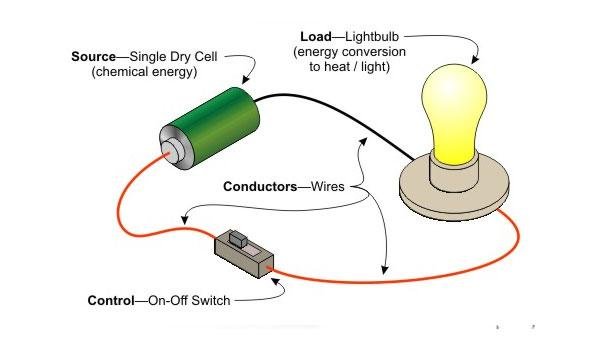Electric Current
Electric current is the time rate of change of charge, measured in amperes (A). Mathematically, the relationship between current i, charge q, and time t is
Basic Concept
Consider a short length of copper wire. At room temperature with no external forces applied, there exists within the copper wire the random motion of free electrons created by the thermal energy that the electrons gain from the surrounding medium. So With no external forces applied, the net flow of charge in a conductor in any one direction is zero.
When a external force such as battery is applied across a light with copper wire. The battery, at the expense of chemical energy, places a net positive charge at one terminal and a net negative charge on the other. The free electrons will drift toward the positive terminal and create electric current.
Unit of Electric Current
Current is measured in amperes(A) in honor of André Marie Ampère. A current of 1 ampere(A) means that 6.24 x 1018 , 1 coulomb, electrons drift past a single point in a circuit in 1 second.
Classification of Electric Current
There are two different types of current :
- Direct current (dc)
- Alternating current (ac)
By convention, the symbol I is used to represent dc current. Alternating current is represented by the symbol i.
A direct current (dc) is a current that remains constant with time.
An alternating current (ac) is a current that varies sinusoidally with time.
Direction of Electric Current
The direction of current flow is conventionally taken as the direction of positive charge movement. When the charge carriers (electrons) are negative, conventional current is in the opposite direction as the electrons.
Based on this convention, a current of 5A may be represented positively or negatively as shown in Fig. In other words, a negative current of -5A flowing in one direction as shown in Fig(b) is the same as a current of +5A flowing in the opposite direction.





